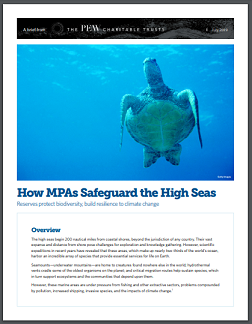
The high seas begin 200 nautical miles from coastal shores, beyond the jurisdiction of any country. Their vast expanse and distance from shore pose challenges for exploration and knowledge gathering. However, scientific expeditions in recent years have revealed that these areas, which make up nearly two-thirds of the world’s ocean, harbor an incredible array of species that provide essential services for life on Earth. Seamounts—underwater mountains—are home to creatures found nowhere else in the world; hydrothermal vents cradle some of the oldest organisms on the planet; and critical migration routes help sustain species, which in turn support ecosystems and the communities that depend upon them. However, these marine areas are under pressure from fishing and other extractive sectors, problems compounded by pollution, increased shipping, invasive species, and the impacts of climate change.The organizations charged with managing these extractive activities have not always included conservation of marine life as part of their mandate; even when they have, these organizations have not always successfully met their objectives...Marine protected areas (MPAs) are critically important tools for repairing and safeguarding marine ecosystems. But the current governance system lacks a mechanism to establish and effectively implement MPAs in most areas of the high seas.






